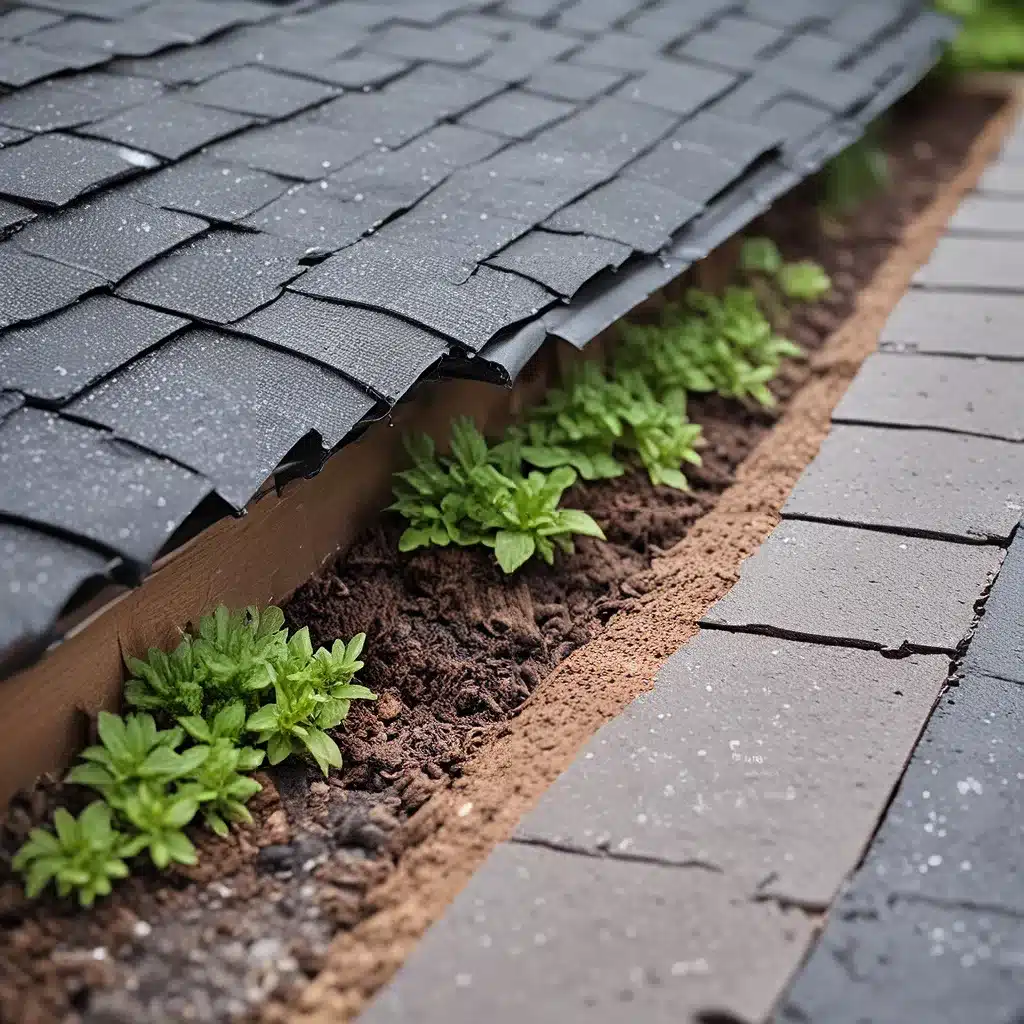
Capturing the Downpour: Rain Barrels and Beyond
Ah, the rainy Pacific Northwest – where the skies open up and pour down a seemingly endless supply of water. As a homeowner, I’ve found myself endlessly fascinated by the challenge of harnessing all that wet goodness for my own eco-friendly purposes. After all, why let all that precious precipitation go to waste when it could be nourishing my thirsty garden?
Enter the humble rain barrel – that unassuming receptacle that promises to turn my rooftop runoff into gardening gold. I’ll admit, at first I was a bit skeptical. How much of a difference could one little barrel really make? But then I did the math. When a 1-inch rainfall hits my modest 300-square-foot roof, it unleashes a whopping 187 gallons of water. That’s more than triple the capacity of my trusty rain barrel! No wonder managing stormwater is such a big deal around here.
So while the rain barrel may have its limitations, it got me thinking – what other creative, eco-friendly ways can we harness all that excess water flowing off our roofs? From cisterns and grassy swales to green roofs, the solutions are out there if you’re willing to get a little innovative. And as it turns out, implementing these sustainable drainage systems isn’t just good for the environment – it can also be a boon for your wallet, reducing those pesky water bills and stormwater runoff fees.
Rethinking the Rainspout: Innovative Gutter Solutions
As I delved deeper into the world of eco-friendly roofing drainage, one thing became abundantly clear – the traditional gutter system is often the weakest link. Those plain old metal troughs can quickly become clogged with leaves, twigs, and other debris, leading to backups, overflows, and a whole host of water woes.
But fear not, my fellow eco-warriors – there are some ingenious gutter guard solutions out there that can keep your downspouts flowing freely, even in the face of Mother Nature’s onslaught. I’m talking about everything from curved gutters that discourage debris buildup to fine mesh screens that act as a water-permeable barrier.
And get this – some forward-thinking DIYers have even taken things a step further, crafting their own custom gutter systems out of recycled materials. Imagine a gutter made from reclaimed wood or even repurposed plastic barrels. Not only do these homespun solutions look cool and reduce waste, but they can also be surprisingly effective at keeping your roof’s runoff under control.
Harnessing the Heavens: Cisterns and Grassy Swales
As much as I love my rain barrel, I’ve come to realize that it’s really just the tip of the water-harvesting iceberg. If you really want to make a dent in your household’s water usage, you need to think bigger. And that’s where the mighty cistern comes into play.
Essentially a large-scale rain barrel on steroids, a cistern can store hundreds or even thousands of gallons of precious precipitation. Sure, the initial investment might be a bit steeper than a standard rain barrel, but the long-term benefits are hard to ignore. Not only can a cistern keep your garden thriving through the driest of summers, but it can also help reduce the strain on municipal water supplies and stormwater infrastructure.
And speaking of stormwater, what better way to manage all that excess runoff than with a good old-fashioned grassy swale? These shallow, vegetated channels are designed to slow the flow of water and allow it to gradually seep into the soil, recharging groundwater supplies in the process. Plus, they can double as attractive landscape features, adding a touch of natural beauty to your property.
Rooftop Raingardens: The Green Roof Revolution
As if rain barrels, cisterns, and swales weren’t enough, there’s one more eco-friendly roofing drainage solution that’s been catching my eye: the green roof. The premise is simple – instead of traditional shingles or tiles, you cover your roof with a layer of soil and hardy, water-loving plants. Not only does this create a lush, verdant oasis right on top of your home, but it also acts as a sponge, soaking up and slowly releasing stormwater runoff.
Now, I know what you’re thinking – a green roof sounds like a lot of work and expense. But hear me out. Beyond the obvious environmental benefits, a green roof can also insulate your home, keeping it cooler in the summer and warmer in the winter. And over time, that can translate to some serious savings on your energy bills. Plus, with the right design and plant selection, a green roof can be surprisingly low-maintenance.
Conclusion: Embracing the Raindrops, Reaping the Rewards
As I look back on my journey of discovering eco-friendly roofing drainage solutions, I can’t help but feel a sense of wonder and excitement. Who knew that something as simple as a well-placed rain barrel or a strategically designed grassy swale could have such a profound impact on our homes, our wallets, and our planet?
Sure, some of these sustainable systems may require a bit more time, effort, and upfront investment than your standard gutter and downspout setup. But in my experience, the long-term payoffs – both in terms of environmental stewardship and practical benefits – are more than worth it. So why not embrace the raindrops and start reaping the rewards? Your garden, your wallet, and Mother Earth will thank you.